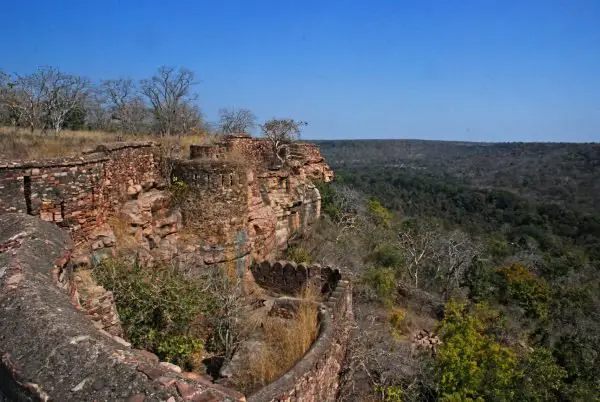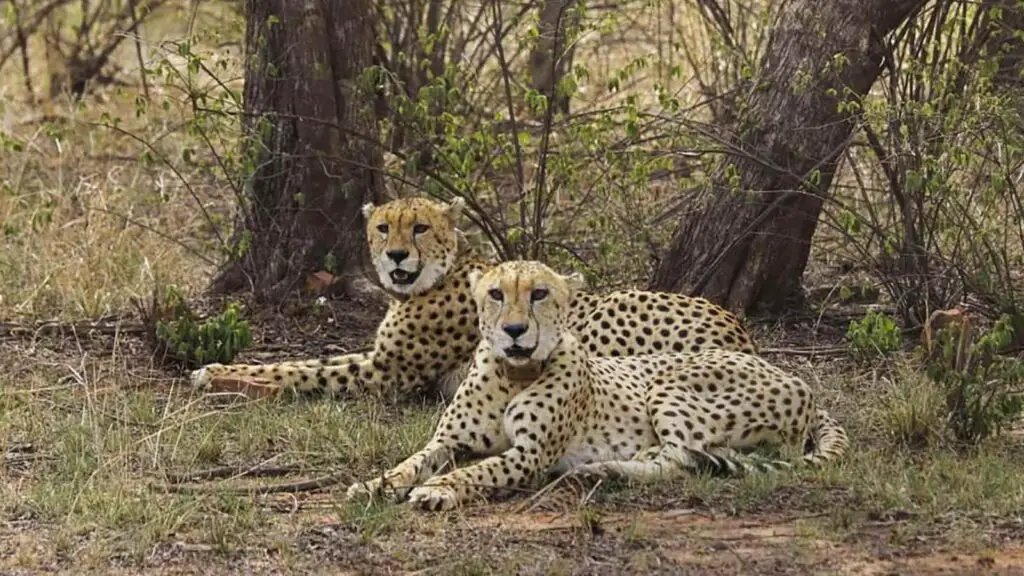Table of Contents

Why in News?
Currently, there are controversies surrounding the Madhya Pradesh Government after coming up with what could be considered as ambitious project of Cheetah re-introduction in the Gandhi Sagar Wildlife Sanctuary (GSWS). This undertaking would go a long way in helping India retry this extinction project directed to its cheetah population which was earlier declared non-existent in 1952. After this triumph at Kuno National Park (KNP), GSWS is all set to be the next haunt of these aristocrats in the country.
The early evolution of Project Cheetah
Phase-1: Laying the Foundation
- Chennai speaking, it is launched in 2022, Project Cheetah is to help in reintroduction of cheetah in the original habitat of India. Naturally, the project started with the relocation of the cheetah from South Africa and Namibia to Kuno National Park.
- It was a historic decision which was carried out with cooperation of National Tiger Conservation Authority (NTCA), the Madhya Pradesh Forest Department and the Wildlife Institute of India(WII).
- The main objective was to reintroduce and breed cheetahs in the wild while using similarities in ecosystem and prey in Kuno.
Phase-2: Expanding Horizons
- Strapped with Phase-1 now being implemented, Phase-2 further proposes to obtain cheetahs from Kenya famous for the Maasai Mara National Reserve that has similar geographical characteristics with certain parts of India.
- This phase will involve translocation of cheetahs not only to Kuno National Park but also to another newly prepared habitat namely Gandhi Sagar Wildlife Sanctuary, witness the big cats get a new play ground.
Gandhi Sagar Wildlife Sanctuary: Fitted Environment
Location and Geography
Gandhi Sagar Wildlife Sanctuary was notificated in year 1974 and covers the area of Mandsaur and Neemuch districts in western part of Madhya Pradesh, neighbouring to Rajasthan. Chambal River put through the sanctuary nearly in the middle by dividing the sanctuary into two halves nearly equal. The sanctuary’s water is supplemented by the Gandhi Sagar Dam, making it more valuable from the ecological viewpoint besides occupying the area rich in fauna and flora.
Ecosystem and Terrain
The type of vegetation found in the sanctuary is easily understandable due to the geographical features of the area as well as its climate: rocks with a thin layer of nutrient-poor soil, making the character of the area quite similar to savannas. This includes areas with grasslands along with a few scattered trees of dry deciduous vegetation. The valleys along the river courses are still filled with forest cover, while the rest of the sanctuary’s ground is heterogeneous, providing suitable cheetah habitat in the savanna and open grassland. This environment, similar to Maasai Mara, makes GSWS the right environment to introduce cheetahs, especially considering the impacts of global warming on wildlife habitats.
Cheetahs: A collection of fast and swift animals and birds

Breeding and Lifecycle
- Cheetahs have a non-specific breeding season which occur throughout the year but mainly during the rainy season.
- Only the females get to reproduction maturity at the age of 20- 24 months while the male reaches this maturity at a slightly later at 24- 30 months.
- The gestation period ranges from 90-95 days, and they produce litters of 3-5 young ones which are referred to as cubs.
- Their vocalization is unique and dissimilar to the other large felines; instead of roaring, cheetah use a type of chirp or bark.
Territorial and Hunting Behavior
- Cheetahs are primarily not social animals and mark their territories using things like scratch lines and scent.
- They use calls such as the stutter bark to defend their area and communicate with other cheetahs that they are around. Known as the fastest runners on earth, cheetahs run at the speed of 120 km/hr their claws are half retractable to trip their prey.
- They are fast runners but their success in hunting its prey is only about 40-50%.
Protection and Conservation Status
- Cheetahs are placed in IUCN vulnerable list and banned to be traded or sold under Cite Code and Indian Wild Life (Protection) Act.
- This underlines the necessity of the creatures’ protection and the significance of the initiatives such as Project Cheetah for their successful rehabilitation.
Obstamines in the Creation of Gandhi Sagar Cheetah Reserve
Prey Availability
- Another problem that has been noted in Gandhi Sagar Wildlife Sanctuary is that great predators face a problem of a small amount of prey.
- This is the state of population of other animals that are in the reserve: Chital – too less, Blackbuck – too less, Chinkara – too less and all these were pathetic to support those Cheetahs.
- There is need to have approximately 350 population of ungulates so that the single cheetah coalition family can support it.
- One of the cheetahs many needs for sustaining itself are the prey animals within the region and the numbers of prey animals should be increased.
Competition and Adaptation
- Thus, leopards’ presence in GSWS creates a competitive pressure as the two species share comparable prey preferences.
- Also, cheetahs that were translocated from Kenya would have issues adapting like growing more fur for the African winter, which is not good for the Indian climate.
- This may result to feeling uneasy and finding it hard to adapt to the new surrounding until they get used to it.
Proximity to Human Habitation
- While Kuno has highways and human settlements around the protected area but outside the PA buffer, the same in the case of GSWS.
- This could pose some problems of human-wildlife conflict and also acts of the cheetahs moving closer to the villages and homesteads in search of prey.
Health and Infection Risks
- The period in which the translocation is done is important bearing in mind that cheetahs may be prone to diseases during monsoon.
- For the re-introduction to be successful the animals have to be fit and adjust well to the new environment of the new habitat.
Kuno National Park
Historical Background and Ecology
- Kuno National Park initially began as a wildlife sanctuary in the year 1981 and later upgraded as National Park in 2018 located in the Khathiar-Gir dry deciduous forests of Madhya Pradesh.
- It has already served as a suitable home for the re-introduced cheetahs and gives useful information as well as practice for other such projects in Gandhi Sagar.
Lessons Learned
- The case of cheetahs’ successful reintroduction to Kuno can be enlightening and instructive for the situation with cheetahs in Gandhi Sagar; therefore several key issues should be addressed:
- A proper prey base, minimizing conflicts with humans and livestock, and regularly monitoring physical conditions and genetic fitness of cheetahs in a new environment.
Conclusion
- Thus, the future of cheetahs in India is dependent on several factors that need to be carefully analysed to come up with the right strategies to protect the predator.
- The process of returning of the cheetahs in Gandhi Sagar Wildlife Sanctuary could be considered as one more important step in the program of the wildlife management and species preservation in India.
- In this way, India needs to provide a favorable environment for these unique predators and making it possible to preserve cheetahs, which is important for the restoration of the Faithful country’s fauna.
- The success of this project as claimed earlier will highly depend on the four major factors; prey base, competition, acclimatization, and proximity to man.
- If proper strategising and implementation would be made, Gandhi Sagar could turn into a prosperous reserve for the deer-like cheetahs and make a new history to the wildlife of India.
- By using the experiences from Kuno and with the commitment of the conservationists, Gandhi Sagar Wildlife Sanctuary is on the right track of symbolizing hope for the comeback of this splendid species in their original range.
FAQs
Q1: This is a brief description of the Wildlife Sanctuary known as the Gandhi Sagar.
Ans: The Gandhi Sagar Wildlife Sanctuary was declared in the year 1974 and lies in the regions of Mandsaur and Neemuch districts of the state of Madhya Pradesh, coming under the border of Rajasthan. Crossed by the Chambal River, it splits into two; the whole area is a savanna that has a rocky structure with evergreen valleys along the river.
Q2: For what reason cheetahs are being translocated back to India?
Ans: Earlier, the Cheetah was hunted extensively and they went extinct in India in the year 1952. The facilities introduced are meant to help with the revival of their populations and thus improving on the diversity and balance of the ecology systems. Initiated in 2022, project cheetah aims to reintroduce the population of cheetahs in India by bringing them from Africa to the appropriate areas.
Q3: The first query is what project cheetah is?
Ans: Project cheetah is envisages to reintroduce and rehabilitate the pristine species cheetahs in the country of India. It covers a process of using cheetahs from Africa to introduce them to the wildlife sanctuaries in India starting with the Kuno National Park and followed by the Gandhi Sagar Wildlife Sanctuary.
Can you be more specific about the content of your article? After reading it, I still have some doubts. Hope you can help me. https://www.binance.com/ar-BH/register?ref=V2H9AFPY
Your article helped me a lot, is there any more related content? Thanks!
I don’t think the title of your article matches the content lol. Just kidding, mainly because I had some doubts after reading the article. https://www.binance.com/en-NG/register?ref=JHQQKNKN
Can you be more specific about the content of your article? After reading it, I still have some doubts. Hope you can help me.